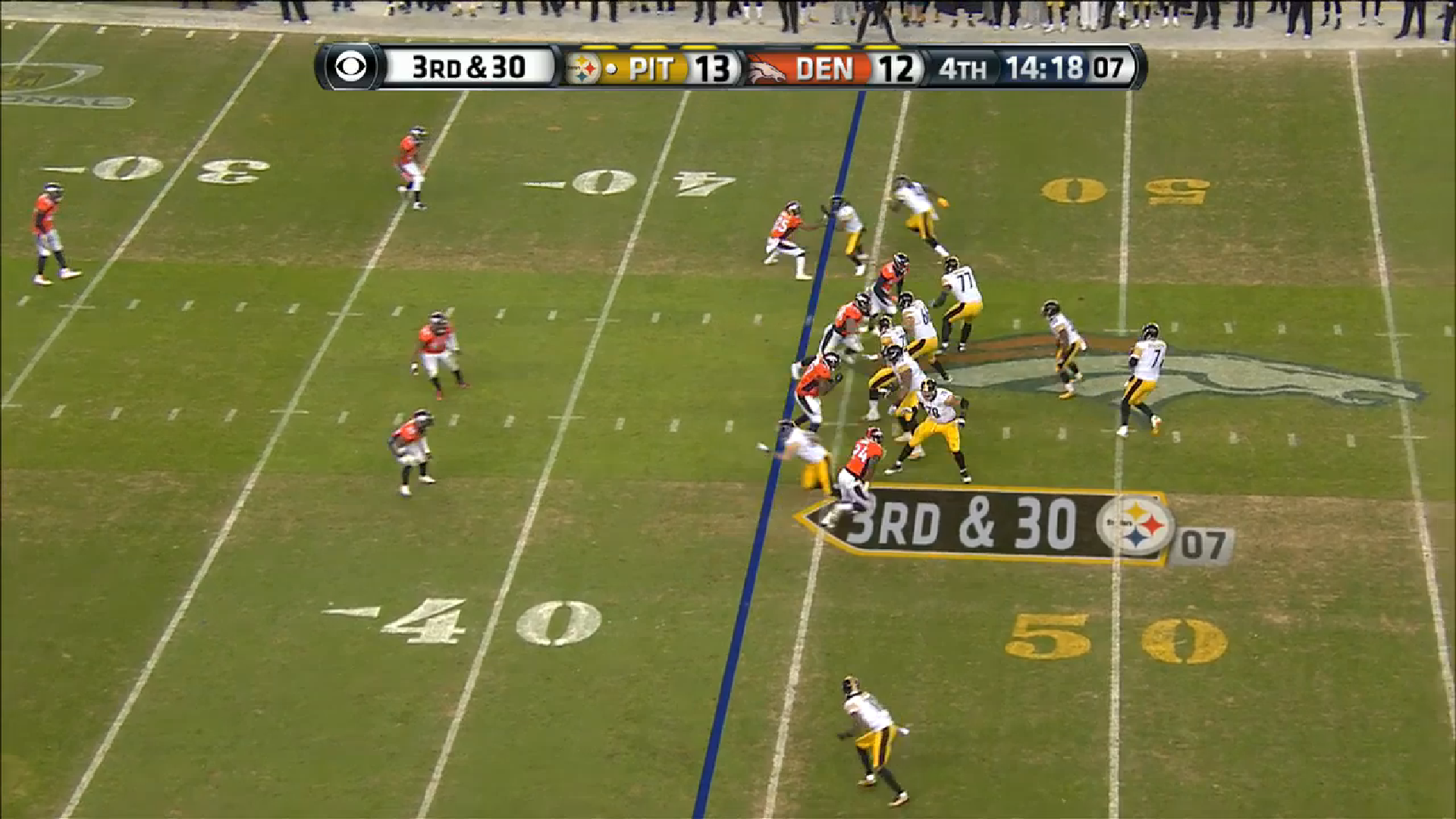Yesterday, against the best defense in the league, the Pittsburgh Steelers ran 59 offensive plays, putting up 396 total yards, and averaging 6.7 offensive yards per play. While they only rushed for 85 yards, they averaged 4.5 yards per attempt—thanks to a 40-yard end around. And Ben Roethlisberger and the offense averaged 7.8 yards per drop back, including three sacks taken.
But the offense only scored 16 points, including three field goals and one touchdown, so how could they have been so efficient moving the ball down the field, but not getting into the end zone? For one thing, they only converted one of three trips into the red zone into a touchdown.
But the most significant factor was the fact that they had absolutely terrible success converting on third and fourth down, much of which was partly enabled by their inability to put themselves in manageable down and distance situations due to failures on early downs.
For the game, the Steelers converted just two of 12 third-down opportunities, and they also failed to convert on both of third attempts on fourth down. The third-down conversion rate was just 16 percent, which would be a number you expect to see with the Steelers when Roethlisberger is out with an injury, not when he is on the field.
Pittsburgh possessed the ball for 13 drives during the game. On five of those drives, they failed to record a first down, going three-and-out. When nearly 40 percent of your drives in a game fail to produce even 10 yards of forward progress, you are bound to struggle.
To open the game, the Steelers immediately put themselves in a third-and-eight situation, failing to convert. It happened against the second possession, but they converted, only to be put into a third-and-nine three plays later. They failed to convert that, and then failed to convert on fourth and one from the 32-yard line of the Broncos.
After going three-and-out on the following drive with an incompletion on third and nine, the Steelers solved the problem by avoiding third downs, scoring a touchdown on a five-play, 80-yard drive, highlighted by two explosive plays.
Into the second quarter, the Steelers managed to convert on third and five before stalling on third and 13 and settling for a field goal. The next drive ended in a three-and-out when Roethlisberger was sacked on third and eight.
You get the general idea. The Steelers typically put themselves in bad third-and-longs all evening, and they were unable to convert most of the time. They converted on third and eight and then third and five, and the other 10 third-down opportunities were a bust. Eight of their third-down opportunities came with eight or more yards to go.
Of course, the worst ones came late in the fourth quarter with the Steelers trailing by seven points. At the two-minute warning facing a third and five, Roethlisberger was unable to get off a clean pass. He was dropped for a 13-yard loss on fourth down. And with it essentially went the season, as the Broncos responded with a field goal that made it a two-possession game with 53 seconds to play.








